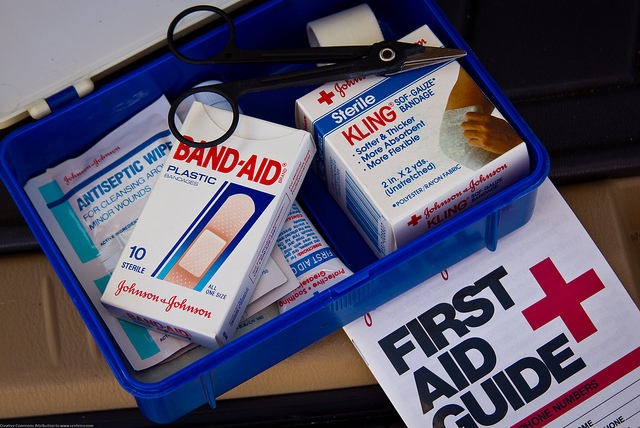In an emergency, a properly stocked first-aid kit can often mean the difference between stopping a situation from escalating before it gets out of control and winding up with a life-threatening incident on your hands.
Whether you are using your first-aid kit as a homesteader, taking it with you for backwoods camping or other activities that could result in a survival situation, or simply packing one to have on hand in the event of an extreme weather event or accident, there are certain items that it should absolutely have.
The Basics
A first-aid kit should have plenty of items necessary for injuries that are not life threatening or serious enough to require additional care.  These include the kinds of items you would need for dealing with minor cuts, scrapes, and bruises; first-degree burns, sunburns, and allergic reactions. The basic items for non- life threatening situations should include:
These include the kinds of items you would need for dealing with minor cuts, scrapes, and bruises; first-degree burns, sunburns, and allergic reactions. The basic items for non- life threatening situations should include:
• Band-aids of different shapes and sizes. This includes everything from small band-aids for simple cuts all the way up to butterfly bandages for more serious ones.
• Gauze – and plenty of it. You’ll want to have gauze pads as well as rolls for bandaging cuts that are more serious than what band-aids can handle.
• Medical tape for securing bandages and a roll of duct tape as well. Duct tape is useful for making splints, is stiff enough to stabilize slings and won’t lose its adhesive ability if it gets wet.
• Instant cold packs for relief from sprains and bruises. You’ll want the kind that you shake to start a chemical reaction that produces cold.
• Athletic bandages for wrapping sprained ankles and holding cold packs in place.
• Poison ivy wash that can quickly and effectively remove oils from poison ivy, sumac and oak. While poison ivy is not life-threatening, it can be uncomfortable and debilitating in a survival situation.
• Scissors and tweezers are two tools that you don’t want your first aid kit to be lacking. Tweezers are perfect for removing splinters and other debris from wounds, and scissors are the best tool for cutting bandages and cutting away clothing from a wound.
• Antihistamines for treating allergic reactions to bee stings, insect bites, and poisonous plants. Pack antihistamines like Benadryl whether or not you have known allergies. Calendula oil or hydrocortisone cream for treating skin rashes is critical as well.
• Pain killers for relieving aches and pains. While more serious injuries will require better painkillers than what is available over-the-counter, these are the best you can get without a prescription.
• Antibiotic ointment and Isopropyl alcohol for cleaning wounds.
Additional Items In addition to the listed first-aid items, your first-aid kit should also include items that you may need in an emergency situation. This way, you don’t have to go looking for these tools elsewhere in your gear or home. They include the following:
• Flashlight with backup batteries stored separately. More than one flashlight is even better, and it’s recommended that you opt for camping headlamps rather than hand-held flashlights. This way your hands are free to work on the situation at hand.
• Hand sanitizer so you can quickly disinfect your hands before and after assisting the injured person. Disposable sterile gloves are very useful for preventing infection as well.
• Road flares for signaling an emergency, especially if you intend to keep your first aid kid in the car.
• Water purification tablets are crucial if you are stranded and do not have access to potable water. This is especially true if you are nursing injured persons back to health – you’ll want to make sure you have plenty of clean water. Tablets are better than bottled water because they are smaller and more portable, and they can’t be contaminated.
• Thermometer – preferably digital, for taking temperatures and determining if the injured person is developing a fever.
• Mylar blankets are lightweight, waterproof, and very warm. They are the best protection from the elements in cold weather.
Having a properly outfitted first-aid kit is one of the most important things you can do to survive extreme situations. Make sure yours has everything you need when emergency strikes.
What Do You Have? Comment below and share your experience. What do you keep in you first-aid kit? Why would you recommend that item?














